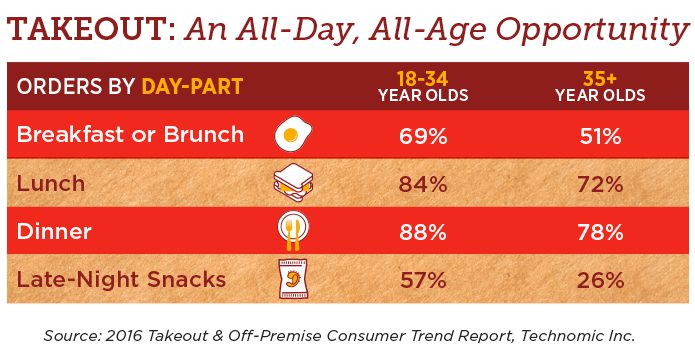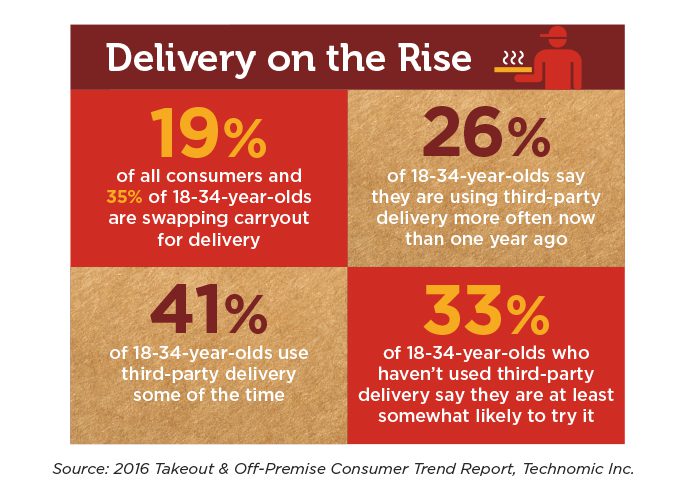Consumer demand for access to food anytime and anywhere is increasing, driven by our busy, on-the-go lives and mobile technology. This has consumers turning to things like meal kits, “grocerants” (grocery stores with on-demand offerings) and delivery services (think GrubHub), creating new competition for dining dollars and declining revenue and guest counts.
The good news is that consumers still want restaurant-quality food. They just don’t necessarily want to eat it in a restaurant. To not only survive, but thrive, in this new competitive landscape, you need to consider capitalizing on this with portability.
Portability is a sales strategy that enables you to get your food to customers in a way that they want it, meeting both their needs and their desires. There are several ways you can bring portability into your operation—enhanced takeout, delivery and retail extension. Consider the following and select the one(s) that are best for your business.
Keep in mind that no matter which portability strategy you adopt, it should be paired with mobile ordering. In today’s swipe- and click-happy world, customers want to find, order and pay for their food from their smartphones and tablets.
Option 1: Enhanced takeout
Blending online ordering technology and various meal solutions without offering your full menu is what enhanced takeout is all about. Guests can get your food whenever, wherever, and you increase business and introduce a new revenue stream while essentially keeping your footprint the same (because you already have the kitchen, the staff and the expertise). Enhanced takeout is also a great opportunity to build and expand your brand, and attract new customers.


Option 2: Delivery
Certainly, delivery has been around some time. But today, there are far more options for getting food from your location to your customers. From national services like UberEats, OLO and Doordash to regional and local companies like Café Courier and Caviar, you don’t have to carry the full cost of having dedicated drivers on-hand.

Generally, partnering with a third-party delivery solution will cost anywhere from 10-24% of your total sales. But keep in mind that if you start offering delivery, any and all sales will be incremental. Also keep in mind that delivery will likely increase back-of-house costs and some administrative costs, but that increase may be offset by a reduction in front-of-house costs because you may have less dine-in eaters, requiring less hosting and serving staff.
Ask potential third-party delivery vendors key questions around price, features, benefits, customization and customer service to find the best fit.
Ultimately in the battle for market share, delivery, whether you handle it in-house or via a third-party, is likely something you should consider.
Option 3: Retail extension
From a simple grab ‘n go kiosk to a full storefront, retail extensions take many forms, all requiring varying degrees of effort, cost and resources. Ideal for full-service operators, a simpler retail extension can offer growth for a smaller investment.
The important thing to understand is that a retail extension relies heavily on foot traffic. Consumers simply drop in, grab what they want and pay. Everything is prepackaged for their convenience. The key to making this model work is offering only a subset of your menu, namely items that travel well, that you can easily and repeatedly execute.
More on Portability
Check out this additional helpful information on portability.
About the Opportunity
Guide for Adopting Portability
Acing Execution
Packaging Picks
Packaging for Portability
Make a smart decision
Talk to your Sales Representative about the team of experts available to help you determine which portability strategy or strategies are best for your operation.











